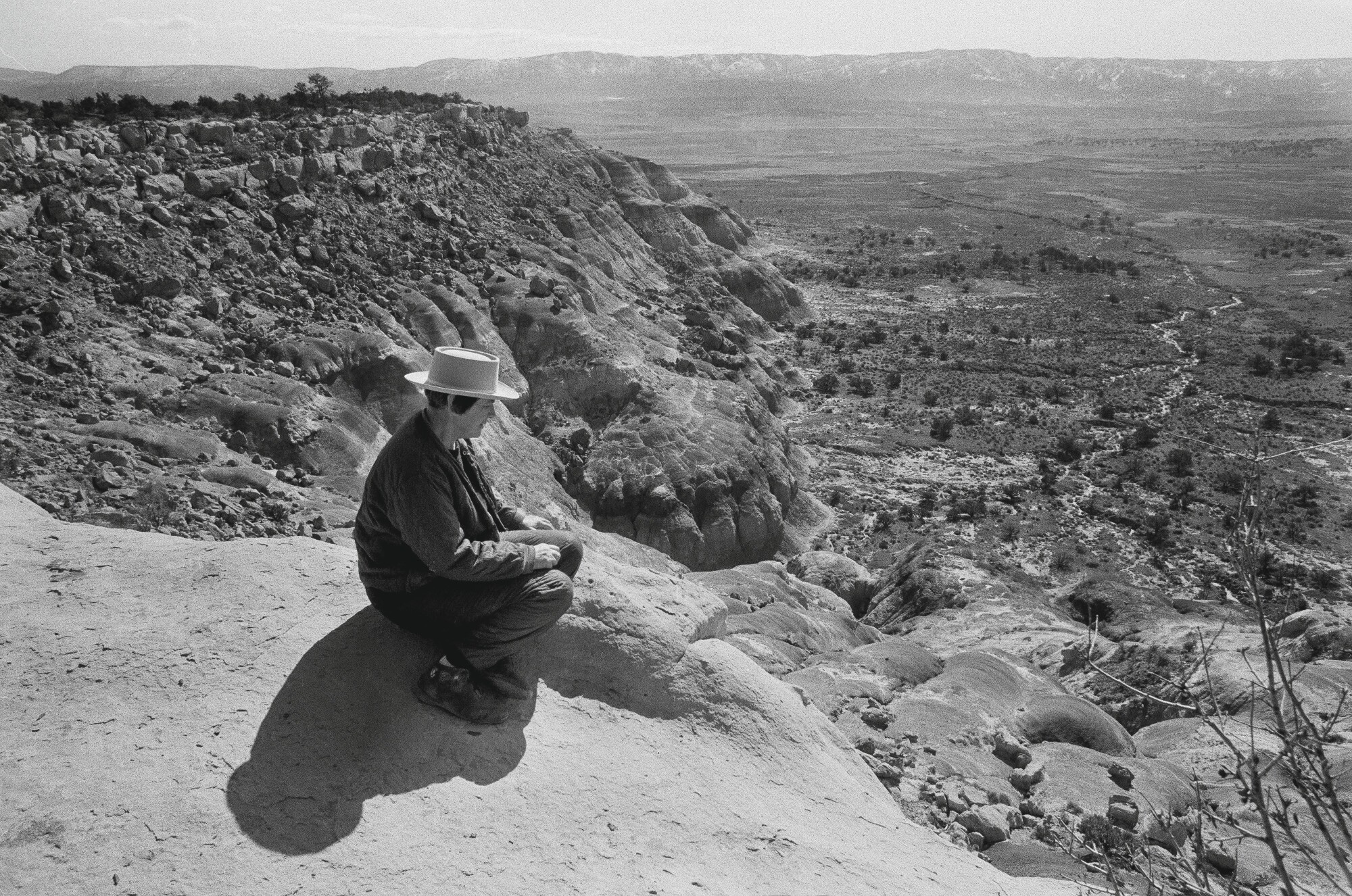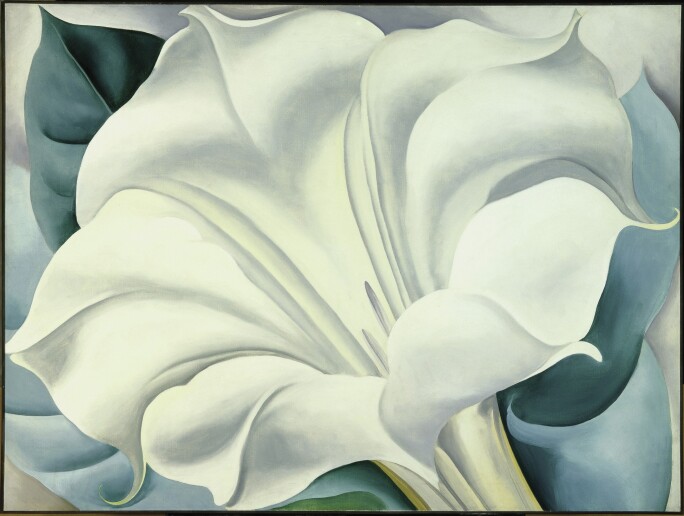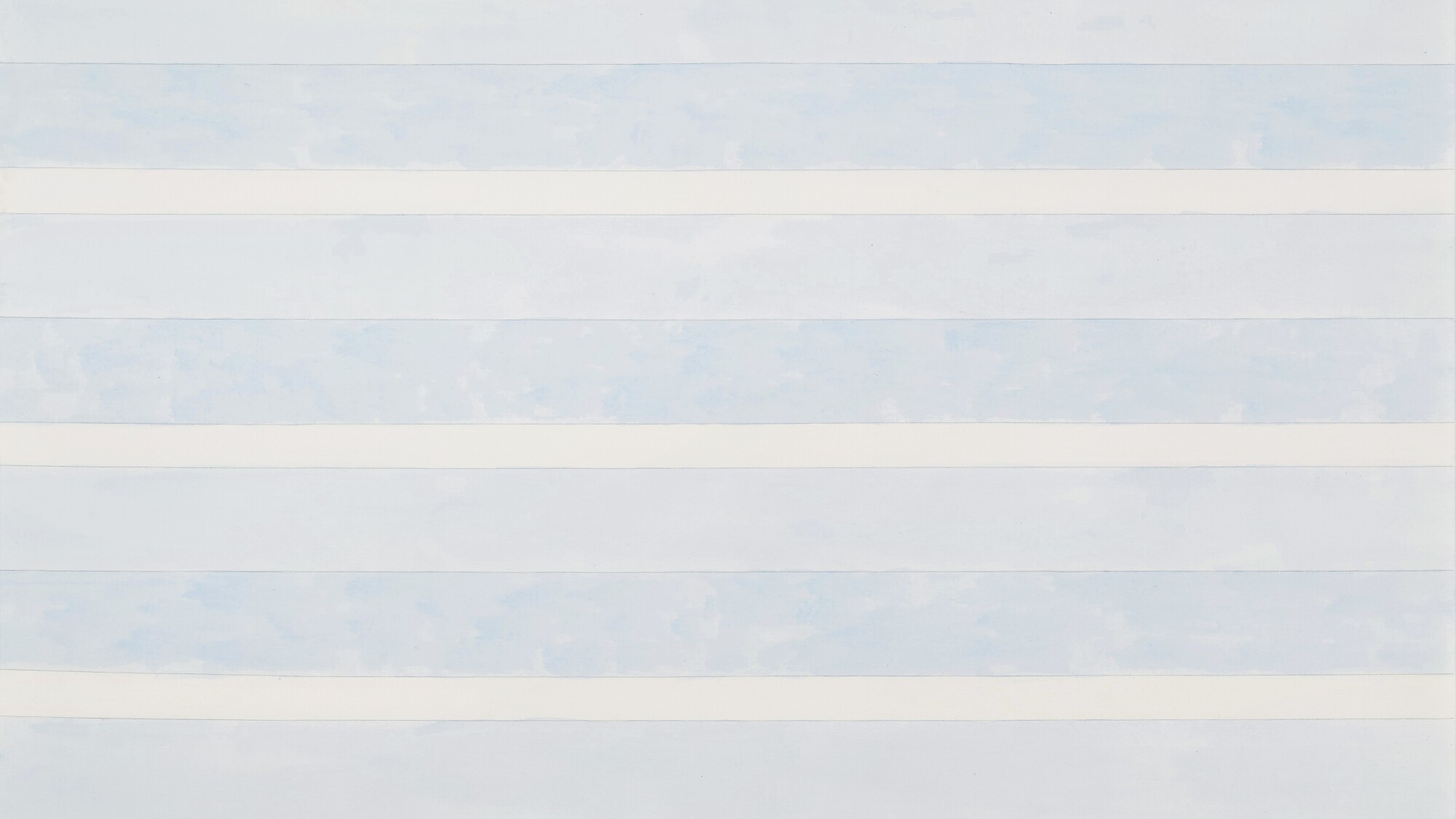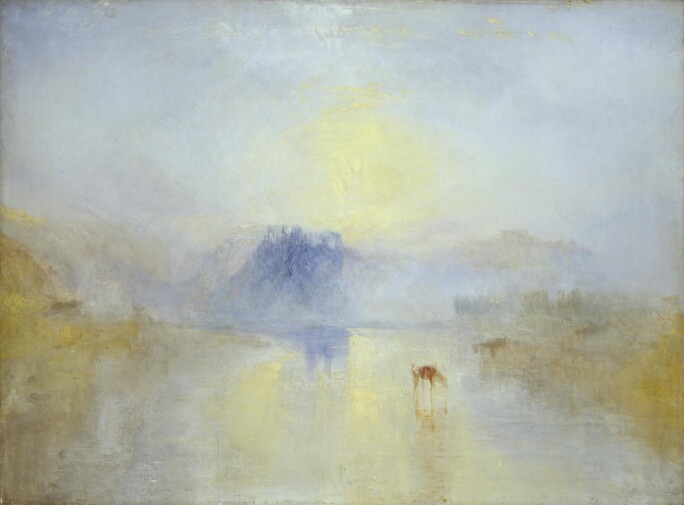
Engaging numerous dichotomies with a grace and integrity that verges on the sublime, Agnes Martin’s Untitled #1 achieves a sensitive equilibrium between the subtle poetry of delicate mark making and the muscular prose of the Modernist grid. Her paintings present themselves as portals into her uniquely spiritual sensibility, yet they manifest themselves within an ordered regimen. At the command of Martin’s brush, notions of composition and perspective are stripped bare, resulting in a simultaneously serene and intellectually rigorous canvas. Her gently articulated manipulation of geometry and classical perfection contrast with the solidity of her pictorial structure. Minimalist abstraction thus serves not as a clinical device but rather as a means of revelation: the unalloyed perfection of the surface engenders an immersive recognition of beauty, calm and self-reflection in its viewer. A refined expression of Martin’s conceptual program and paragon of her mature output, the present work was acquired in 1995, the year of its execution, by Emily Fisher Landau, who maintained a lasting relationship with the artist as both patron and friend. Peaceful and profound, Untitled #1 resolutely testifies to the elegance and expression possible within minimal means and represents her most influential contribution to twentieth century discourse on the value of painting.
“When I think of art I think of beauty. Beauty is the mystery of life. It is not in the eye it is in the mind. In our minds there is an awareness of perfection.”
Consistently working within the stability of the square, Martin employed the cool, mathematical logic of the line to pare down her compositions to the most elemental forms. The continuous horizontal bands of Untitled #1 suggest a distilled landscape, but its rigid formal order is softened by the humanity of the artist’s touch. Atmospheric shades of blue, subtly delineated by graphite, emanate a tender sensitivity, while her tempered geometric vocabulary maintains a graceful coolness. A contemplative union of color and form, the present work boasts Martin’s inimitable technical control through its subdued tonality and marks a departure from her earlier paintings of the 1960s: she gradually shifted away from her chromatically hazy application of sheer washes towards comparably thicker, more substantial surfaces of undiluted pigment, blanketing the weave of the canvas. Far from smothering the work’s energy, however, the added tactility of the surface creates a depth and vitality that unmistakably presages the spiritual power of Martin’s later canvases. Even as it paradoxically suggests a reduction to the barest artistic bones of graphite overlaid on pigment, the resulting masterpiece is breathtaking in its sophisticated luminescence.

“I want to draw that quality of response from people who leave themselves behind, often experienced in nature, an experience of simply joy… My paintings are about merging, about formlessness… A world without objects, without interruption.”
Although Martin’s work aligns visually with an abstract sensibility in its denial of representational or figurative subject matter, her paintings also reject the exaltation of the male gesture. In response to their fevered action painting, Martin embraced a more meditative approach, which led to her adoption of the square and the grid. Her use of this classically Minimalist structure, however, did not signify an alignment with the tenets of that movement, which sought to erase the personal aspect of art and remove all traces of the artist’s hand. Instead, Martin underlined her artistry with a graphite signature, as the subtle inconsistencies and occasional hesitancy of her lines reassert her real and very human presence in the work. These lines are laid down on muted grounds of softened hues that mark a further contrast to the dramatic palettes of the Abstract Expressionists and bold primary colors of Minimalism. Describing the subtle force of the artist’s oeuvre in terms particularly evocative of the present work, scholar Anna C. Chave reflects: “Rather than overlooked by critics, Martin’s quiet technique caused them to look all the more thoroughly, just as we may be impelled to lean forward and concentrate more intensely when a speaker’s voice is exceptionally soft” (Anna C. Chave, “Agnes Martin: Humility, The Beautiful Daughter,” in Exh. Cat., New York, Whitney Museum of American Art, Agnes Martin, 1992, p. 138). As beautifully embodied in Untitled #1, Martin’s exceptional works resonate with a quiet stillness that is at once deeply personal and transcendent.


A masterpiece of the artist’s signature aesthetic strategies, the meditative magnetism of Untitled #1 lies not in the symmetrical regularity of her neat lines but in the singular sophistication with which she manipulates mark, material and method to create works of truly rare sensitivity. When viewed from a distance, the repeated horizontal lines appear straight and ordinary, virtually disappearing into the hushed tonality of the expanse. Upon closer inspection, however, each ruling is entirely unique, characterized by slight irregularities where Martin picked up her pencil, paused, and then resumed, or where the textured surface of the paint discreetly diverts the path of her hand. Without any other distractions, the eye follows the gossamer thin strands as they traverse the monochrome canvas from left to right. Far from impersonal, these wavering undulations reflect the variations of pressure and density inherent to the human touch. Such remarkable dynamism is heightened by the work’s scale: facing this work, the viewer is enveloped in its meditative hum, and absorbs the calm serenity that is such a celebrated feature of Martin’s praxis. For its emotive, monochromatic color palette and consummate expression of the artist’s iconic striated facture, Untitled #1 elicits an incomparable sensation of serenity, aptly summarized by the artist herself: “I want to draw that quality of response from people who leave themselves behind, often experienced in nature, an experience of simply joy…My paintings are about merging, about formlessness…A world without objects, without interruption” (the artist cited in Ann Wilson, “Linear Webs: Agnes Martin,” Art and Artists, 1966, pp. 48-49).



